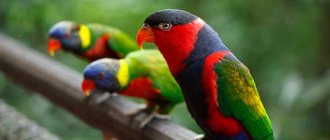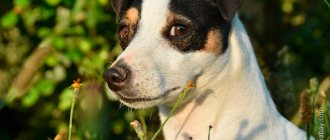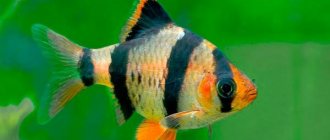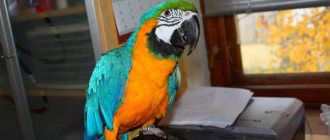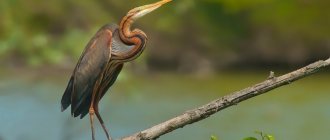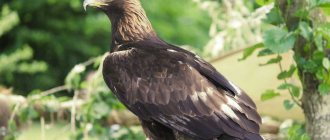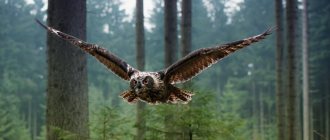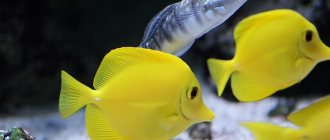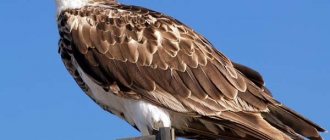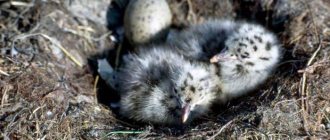- home
- Parrot
- Kinds
05/23/2019 Australian parrots are known all over the world. In the 19th century in Europe it was prestigious to keep them. Then only wealthy citizens could afford it. Now they have become available to many people. The popularity of parrots is so great that they can be seen in pet stores and zoos.
Budgerigar
This species occupies a large area of the mainland. It is the most numerous in the order of parrots living in Australia. Birds are restless and very talkative. Those living in captivity easily remember words that are repeated many times. In their natural environment, these birds live in large flocks and prefer steppe woodlands and semi-deserts. In the midday heat they hide in the shade of leaves. After a night's rest, at sunrise they fly out in search of food and water. During the day they cover enormous distances.
Australian parrots feed on seeds and plant leaves in a flock of grassy meadows. They also feed on the pulp of fruits and their seeds. Birds nest after the end of the rainy season. The place for this is a hollow in a tree or just a crevice. The female lays about a dozen eggs. At this time, the male feeds the expectant mother. The chicks hatch after three weeks. They are born blind and naked. By the age of one month they fledge. After a week or two, they are able to leave their father’s house and live independently.
Character and abilities
Lovebirds
The Necklace Parakeet is distinguished by its good-natured character, sociability, cheerful disposition and excellent ability to get along with people.
The bird is curious, which often makes it do all sorts of tricks, for example, it can chew through an electrical wire, cage bars, gnaw furniture or books, and even drag something interesting for itself into the cage.
Ring-necked parakeets love toys; they are especially attracted by a small mirror, which must be hung within their reach. They will enthusiastically look at their reflection for hours.
But what ringed pets do not like is the proximity to other birds, especially if they are of the same sex, smaller and weaker than them. The bird immediately tries to take a dominant position and does not let its neighbor near food, water, or toys. Therefore, co-location in an aviary is only permissible for several similar-sized necklace parrots or even larger individuals of other species.
Corella
Belongs to the cockatoo family. Beautiful plumage and a high crest on its head make it one of the most magical birds of this species. They mainly live in small groups of several dozen individuals. The habitat chosen is the open, dry areas of the continent. These are flat steppes and savannas with small bushes. They also live on eucalyptus trees growing along rivers. The nectar of these trees during flowering serves as food for them. They also eat fruits and sometimes eat insects. But the main food is the seeds of grasses and woody plants.
To get drunk, they rush down vertically, take a couple of sips and soar into the air. To lay eggs, they build nests in tree hollows. The offspring appears on the 22nd day. Both parents take care of them. After a month and a half, the chicks begin independent life outside the nest. At this time, parents are preparing for the appearance of the second brood.
Domestication
Following George Shaw, zoologist John Gould conducted a detailed study of the lifestyle of budgerigars in 1837. He compiled the most accurate description of this bird species through careful observation. Modern scientists have still not been able to add new information to the characteristics of a zoologist.
As part of Gould's work, budgerigars were brought to Europe, where they instantly became wildly popular. At that time, only wealthy people could afford to own a strange bird, but this did not affect the high demand. Birds were exported in large quantities from their native country, and due to improper care, the parrots died on the way. At the same time, demand did not subside, so the overall population of parrots was under threat of destruction. Australian authorities soon banned the capture and export of wild birds from the country, offering domesticated birds to Europeans.
Instead of catching parrots, ornithologists began breeding offspring at home. The first successful attempt was in 1855. Jules Delon played a major role in this difficult matter, creating a detailed guide to caring for the strange bird.
When purchasing a budgie, it is advisable for the future owner to know about the characteristics of the birds’ habitat in the wild. In their natural environment, birds fly long distances every day, so birds should not be in a cramped cage. Wavys get along well in large flocks and create monogamous families.
Do you know interesting facts about the life of budgies in the wild? Leave comments and share the article on social networks!
King parrot
Stunning plumage color and independent character make this bird truly royal. The red color of the chest, neck and head distinguishes the male from the green female. The habitat of the Australian parrot is in the south-eastern part of Australia. Birds roam in small groups or individual pairs. They are good in flight and very graceful in moving through trees. They make their nests in tree hollows or between trunks. The female lays about 5 eggs. The offspring are born three weeks later. At about the age of one and a half months, the chicks fly away from the nest forever.
Sexual dimorphism
All wild Australian parrot chicks and juveniles appear female, and are virtually indistinguishable from the time of hatching until their first molt. They display horizontal yellow stripes or bars on the ventral surface of their tail feathers, yellow spots on the ventral surface of the primary flight feathers on their wings, a gray crest and face, and a dull orange patch on each of their cheeks.
Adult Australian parrots are sexually dimorphic, although to a lesser extent than many other avian species. This is only evident after the first molt, typically occurring about six to nine months after hatching: the male loses the white or yellow ban and spots on the underside of his tail feathers and wings. The gray feathers on his cheeks and crest are replaced with bright yellow feathers, while the orange cheek patch becomes brighter and more distinct. A woman's face and comb will typically remain mostly gray, although orange cheek is also corrected. In addition, the female usually retains a horizontal bar on the underside of her tail feathers.
Color in Australian parrots is derived from two pigments: melanin (which provides the gray color in the feathers, eyes, beak and legs), and lipochromes (which provide the yellow color on the face and tail and the orange color of the cheek patch). The gray color of melanin overrides the yellow and orange color of lipochromes when both are present.
Melanin content decreases in the face of males as they mature, allowing yellow-orange lipochromes to be more visible, while an increase in melanin content in the tail causes the horizontal yellow bars of the tail to disappear.
In addition to these visible characteristics, the vocalizations of adult males are typically louder and more complex than that of females.
Cockatoo
These birds are very smart. They have a well-developed ability to remember words and surrounding sounds. For example, imitation of pets or phrases often repeated by the owner. The cockatoo's natural habitat is the savanna areas and forests of the tropics of Australia, Indonesia and New Guinea. They live in large flocks of several hundred birds.
They do not fly skillfully, but they climb trees very quickly, using their beak to help them do this. Bird food includes plant seeds, cereal grains, berries and fruits. They often feed on insects and their larvae. During the mating season, they form pairs. The place for laying eggs is located in rocks or a hollow, high from the ground and not far from a water source. There can be 1-5 eggs in one nest. Mature chicks leave their home after 2 months. Birds live for a very long time - about 80 years.
Captivity
It's hard to believe, but the Australian mountain parrot in captivity, with proper care, lives a fairly long life - from 15 to 20 years.
Despite its disposition, it is a friendly bird. She is easy to train and command. Very quickly makes contact with the owner. The mountain parrot is able to remember only a few words and imitates sounds also not very well. Parrots of this species have a sharp voice. The main time for making sounds is morning and evening. At other times, they make sounds that resemble creaking or grunting.
Cell
Thanks to their endurance, the life of mountain animals in captivity does not bring big problems to their owners. Unpretentious parrots are mainly kept outside in an aviary larger than 3 square meters. The cage should be spacious enough. The luxurious bird will not tolerate embarrassment, and a sedentary lifestyle can harm its health.
Food and conditions of detention
The diet of mountain parrots is quite unique. These are mainly grains (oats, millet, chaff and others). Pet stores sell ready-made mixtures with added vitamins. In addition to grains, your diet should include:
The last two products are best given during the egg hatching period. The female must be constantly fed so as not to harm her offspring. The key to your bird’s health is proper and balanced nutrition.
Unlike its other relatives, the mountain parrot will not cause damage to your furniture and will not conflict with other pets (cats, dogs). They also love water treatments. It won't be difficult to arrange them. It is enough to spray water on your pet directly from a spray bottle.
The luxurious mountain parrot can withstand temperatures from 4 to 18 degrees Celsius. Therefore, the cage can be located both outside the window and indoors. Of course, it is necessary to take into account windy weather and our frosty winters.
Reproduction
The first half of the year is breeding time for the luxurious mountain parrot. Namely, from January to August.
They live in small colonies. Approximately 18 families each. A female parrot lays an average of 3-7 eggs and incubates them for approximately 20 days, with an error of 3 days. During disembarkation, the male feeds the expectant mother. Then, after the chicks hatch, the parents look after their offspring together. After 35 days, the babies boldly spread their wings and begin to fly. After another 2 weeks in the wild, they leave the parental nest. At 2 years old, mountain parrots are ready to breed.
Education
Very often, a passive lifestyle can lead this wonderful bird to obesity. To avoid all this, you need to spend more time with your pet.
You will have to acquire not only a fairly spacious enclosure, but also a bunch of toys, since mountain parrots are quite passive and will not invent entertainment for themselves. They will simply sit peacefully on the perch and make sounds from time to time. At the pet store you can find a lot of options for entertaining your pet. These are all kinds of swings, pendants, rubber squeakers, and also a running wheel.
The mountain parrot is quite talented. With proper care, he will be able to follow commands, learn to speak about 20 words, and will also become your faithful friend.
The Australian Mountain Parrot is a very sociable and trainable bird. If several families are united in one enclosure, it is better to let everyone in at the same time so that there is no showdown over territory.
Pet talents
A luxurious parrot can equally replace any pet for you. The only inconvenience he can cause you is a loud cry. Otherwise they won't cause you any problems. They make contact quite easily, are very friendly, and are also easy to train. Able to learn up to 10 words. They respond to easy commands: spin around, collect coins in a box, and so on.
With the right approach, you can discover a lot of talents in your pet. All of them can easily cover their loud voice, which often causes discomfort to the owner.
Your rating is very important to me
Average rating 0 / 5. Total ratings 0
There are no votes yet - be the first to rate!
song parrot
The bird got its name thanks to the incredible trills of the males. Females are incapable of this. These birds live among isolated bushes and trees in the mountains in the southeast of the continent. They move in large flocks to meadows and pastures. A favorite delicacy is grains grown by local residents. Therefore, they began to settle closer to humans. During the breeding season they separate into pairs. There are up to 8 eggs in a clutch. While the female sits in the nest, the male feeds her and defends the territory. The chicks hatch at 21 days. After a month, the grown children fly away.
Nestor
This bird looks little like a parrot, since it does not have a bright and variegated color: the plumage of the nestor is a uniform dark olive-green color. Its body length is 38-48 cm. Young birds live in the highlands of the islands of New Zealand, where they settle above the forest zone. These parrots easily tolerate snowy winters. Locals call them sheep killers because nestaors can jump on the backs of domestic animals and inflict wounds on them with their beaks. Usually the sheep runs until it is freed from the “rider”, but an extensive wound leads to its quick death. However, only a few individuals can kill sheep and do this only when there is a lack of other food.
Rosella
A bird with extraordinary beauty of plumage and emitting iridescent trills. They build their nests near ponds and rivers of Australia and nearby islands. They live in flocks of several dozen individuals. In search of food they make only short flights. Chicks are hatched twice a year. They appear on day 21. After a month and a half, the babies are ready for independent living, although their parents continue to care for them for another week.
Things you should know
It is very important that your parrot's cage always has two feeders and a drinking fountain, at least for those who can access them without any problems. We will examine water bowls and feeders to ensure that the water is clean and food is plentiful.
You should check regularly as parrots (like other birds) tend to shell the seeds on top of the food itself, creating a layer of important husks.
We will look at water bowls and feeders making sure the water is clean and food is plentiful. You should check regularly as parrots (like other birds) tend to shell the seeds on top of the food itself, creating a layer of important hulls.
This can give us the feeling that the trough is full, when the reality is that it represents an accumulation that cannot be transferred. For the same reason, seeds on the surface of the feeders should be blown out frequently, at least once a day.
I advise you to do this with soda straws so that they fly away but do not stick to our face or hair, once we catch the trick we will realize that it is very simple. However, we will always find seeds in our parrot's soil!
If you want to try the breed of parakeet, if the cage is not very large, a removable nesting box is usually placed next to the door for sale in specialized establishments. Additional observations to prepare the perfect home for our parrot:
At the bottom of the cage, to make cleaning easier, you can Place Gritt (mineral deposit) or running gravel.
bath for parrots It will be placed regularly so that they can enjoy the bath and clean their feathers. This helps them prevent ticks. When our friends have taken the shampoo, we will remove it, we should not leave it as a permanent element, they can defecate and drink at the same time.
It is always convenient for parrots to have at their disposal a cuttlefish bone or a salt tablet that performs the same function. In addition to providing calcium, it helps them avoid excessive beak growth.
There are also assistive devices located outside the cage so that they can regularly consume fresh food in a more hygienic way. Some products we can offer daily:
If you want to read more articles similar to Types of Cages for Parrots, we recommend that you enter the What You Need to Know section.
Red-winged parrot
A very beautiful, but little-studied species. Captivity is very difficult to endure. Lives in Australia and New Guinea. Parrots live in the foliage of eucalyptus and mangrove forests at an altitude of 500 meters. They spend a lot of time among the foliage of trees. They live in small flocks of one to two dozen. Nests are laid out with wood chips in tree hollows. The incubation period lasts almost three weeks. There are up to 6 eggs in a clutch. The offspring are born naked. After 6 weeks, by the time they leave the nest, the plumage is fully formed.
Glossy (Neophema splendida)
Known throughout the world, the glossy or red-chested grass parrot (English: Scarlet-chested Parrot, Splendid Grass-parakeet) is considered one of the most beautiful representatives of the grass species. Nature did not deprive them of bright colors either, focusing on green and blue colors.
This species inhabits the eucalyptus trees of Mali and Mulka in the south of semi-arid inland Australia. Also, settlements of these parrots were noticed in the state of Victoria, on the western Australian coast, in New South Wales, in Queensland and on the Eyre Peninsula. The body size of these parrots is about 22 cm and 17-18 tail. Adult males actually have a noticeable scarlet spot on their chest, and their plumage is striking in its silkiness and shine, which gives them their name - glossy. The head and wing edges are bright blue, the back and tail are green. The lower part of the tail and belly are yellow, the beak is black. Females have a green breast.
Not so long ago, the situation with the numbers of this species left much to be desired, but now it has stabilized somewhat. Glossy grass parrots are successfully bred and even receive new color mutations of the species.
Parrots have a very gentle character and peaceful disposition, so they are successfully kept in captivity. In addition, their singing is very pleasant.
Glossy parrots are quite demanding to care for: they do not tolerate high humidity and damp weather very well, and it takes a long time to get used to a new place. They are also susceptible to stress, so such pets should be handled very carefully. They love fruits and vegetables very much.
Glossy grass parrots do not drink too much, but there should still always be fresh water in the enclosure. In addition, birds love to swim, so you should provide them with this opportunity.
Noble green-red parrots
The plumage of males and females of this species is very different. They have a second name - two-color. Such parrots can be found in a small area of north-eastern Australia and the nearest islands. They live in dense tropical forests among fig and coconut trees. Their food consists of plant seeds, young shoots of trees and shrubs, nuts, berries and fruits. Tree hollows are used for nesting. Females and males are polygamous. Hatching of eggs continues for 4 weeks. The chicks are born without plumage, which appears a month later. After 2.5 months, the mature offspring leaves their parents.
Gallery
File:Nymphicus hollandicus - perched on wires - Australian parrots of Australia-6a.jpg|Wild
File:Cockatiel Crest jpg|A wild type (natural grey) Australian parrot showing excitement or interest with its mounted crest
File:Tiel kiss png|Male Australian parrots
File:Parrot Australian parrot lutino.4months.jpg|A pet lutino Australian parrot on hand of his companion
File:Nymphicus hollandicus - favorite ADMpied.jpg|A young favorite Australian parrot ADMpied
File:Captive .jpg|Nearly-all clear (notice the small gray feathers near the edge of its wing), ADMpied Australian parrot
File:Whiteface Australian parrot lutino whiteface chick.jpg|Three-week-old lutino Australian parrot chick
File:PictureofSnowy2 .jpg|One-day-old Australian parrot squeaks
File:Cockatiel under the plumage of invisible light jpg|Cockatiel blazing under the invisible light
File:Cockatiels .jpg|Cockatiels are social birds
File:Male Australian parrot jpg|Male gray Australian parrot
File:Female Australian parrot. JPG|Female gray Australian parrot
File:Katrina and Bloo Cockatiels.png|Three-year domestication of Australian parrots
Azure grass (turquoise) parakeet
Due to its green color and constant running on the ground, the parrot received this name. There are 7 varieties of them in nature. They are critically endangered and protected by government law. They live in Australia, in its forest and steppe parts. In search of food, they constantly run on the ground, only sometimes flying from place to place. The main thing in their diet is grain and plant seeds, sometimes berries and insects. They create pairs during the breeding season. This happens twice a year. The chicks hatch in hollows after three weeks. After 30 days they leave their nest and parents.
Australia is home to countless parrots. Some of them are on the verge of extinction. These amazingly beautiful birds are very popular and bring joy to their owners.
